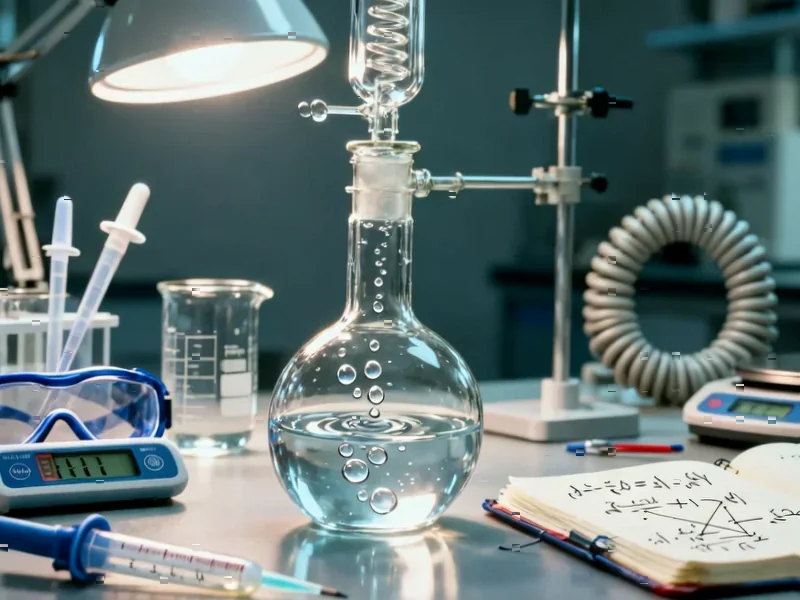According to Phys.org, researchers at the Max Planck Institute for Terrestrial Microbiology in Marburg, led by Johannes Rebelein, have successfully purified and determined the structure of the methylthio-alkane reductase enzyme from the bacterium Rhodospirillum rubrum. This enzyme enables bacteria to produce ethylene under oxygen-free conditions without releasing CO₂, unlike conventional industrial processes that rely on fossil fuels and generate significant carbon emissions. The research, conducted in collaboration with RPTU Kaiserslautern, revealed that the enzyme contains complex iron-sulfur clusters previously thought to exist only in nitrogenases – some of Earth’s oldest enzymes. Doctoral student Ana Lago-Maciel, the study’s first author, noted that these “great clusters of biology” drive the reaction, marking the first discovery of such clusters in a non-nitrogenase enzyme. This structural breakthrough provides the foundation for potentially transforming plastic production from fossil-based to biologically sustainable methods.
The Technical Significance of Enzyme Purification
The purification of oxygen-sensitive metalloenzymes represents one of biochemistry’s most challenging technical hurdles. These enzymes degrade rapidly when exposed to oxygen, requiring specialized anaerobic chambers and extremely controlled environments for handling. Previous research could only study methylthio-alkane reductase in whole cell cultures, which limited understanding of its precise mechanisms. The successful purification by the Max Planck team means researchers can now examine the enzyme’s atomic structure and reaction mechanisms directly, opening possibilities for protein engineering and optimization. This technical achievement alone represents a major step forward in metalloenzyme biochemistry that could accelerate research across multiple fields involving oxygen-sensitive biological catalysts.
Beyond Nitrogenases: The Iron-Sulfur Cluster Revolution
The discovery that methylthio-alkane reductase contains iron-sulfur clusters similar to those in nitrogenases challenges fundamental assumptions in biochemistry. Nitrogenase clusters have been considered evolutionary marvels – complex assemblies of iron, sulfur, and molybdenum or vanadium atoms that can break the strong triple bond of atmospheric nitrogen. Finding similar clusters in an enzyme that produces hydrocarbons suggests these “great clusters” may be more widespread in nature than previously believed. This has profound implications for understanding early Earth chemistry and the evolution of metabolic pathways. The protein scaffold surrounding these clusters appears to determine their specific reactivity, meaning scientists could potentially engineer similar scaffolds to create custom catalysts for different industrial applications beyond ethylene production.
Transforming Chemical Manufacturing
The industrial implications extend far beyond plastic production. Ethylene serves as the foundational building block for countless chemicals and materials, with global production exceeding 200 million tons annually. Current steam cracking of naphtha requires temperatures around 850°C and generates approximately 1.5-2.0 tons of CO₂ per ton of ethylene produced. A biological process operating at ambient temperatures could dramatically reduce energy consumption and emissions. More significantly, the enzyme’s ability to produce multiple hydrocarbons – including ethane and methane – from various substrates suggests platform potential for creating diverse chemical feedstocks. This versatility could enable distributed manufacturing facilities using local biomass resources rather than centralized petrochemical plants.
The Road to Commercialization
Despite the exciting discovery, significant challenges remain before industrial implementation becomes feasible. Enzyme stability, reaction rates, and scalability present substantial hurdles. Biological catalysts typically operate best in aqueous environments at moderate temperatures, while industrial chemical processes often require different conditions. The oxygen sensitivity of these enzymes complicates large-scale fermentation processes. Additionally, the cost of producing these complex metalloenzymes at industrial scales must compete with established petrochemical processes. Researchers will need to optimize enzyme production, potentially through engineered microorganisms, and develop efficient reactor designs that maintain anaerobic conditions while achieving competitive production rates. The timeline from laboratory discovery to commercial implementation typically spans 10-15 years for such fundamental biotechnology breakthroughs.
Environmental and Economic Implications
Successful development of this technology could transform multiple industries beyond plastics. The ability to produce hydrocarbons biologically creates pathways to decarbonize sectors that currently rely heavily on fossil feedstocks, including fuels, lubricants, and specialty chemicals. From an environmental perspective, biological ethylene production could significantly reduce the carbon footprint of the chemical industry, which accounts for approximately 7% of global CO₂ emissions. Economically, it could create new agricultural markets for biomass feedstocks and reduce dependence on volatile fossil fuel markets. The geopolitical implications are equally significant, potentially redistributing chemical manufacturing capabilities to regions with strong agricultural sectors rather than those with fossil fuel reserves.




